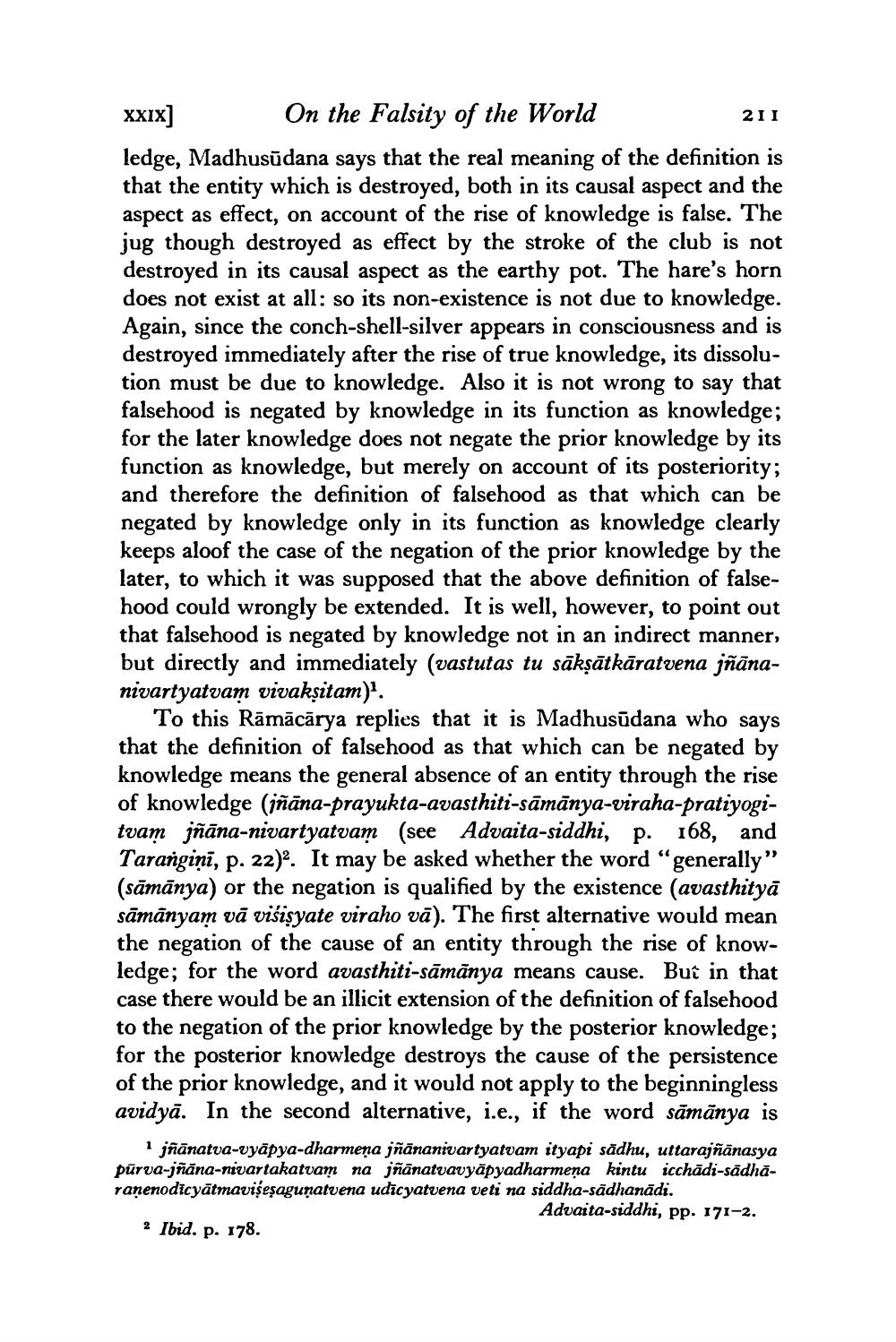________________
XXIX] On the Falsity of the World
211 ledge, Madhusūdana says that the real meaning of the definition is that the entity which is destroyed, both in its causal aspect and the aspect as effect, on account of the rise of knowledge is false. The jug though destroyed as effect by the stroke of the club is not destroyed in its causal aspect as the earthy pot. The hare's horn does not exist at all: so its non-existence is not due to knowledge. Again, since the conch-shell-silver appears in consciousness and is destroyed immediately after the rise of true knowledge, its dissolution must be due to knowledge. Also it is not wrong to say that falsehood is negated by knowledge in its function as knowledge; for the later knowledge does not negate the prior knowledge by its function as knowledge, but merely on account of its posteriority; and therefore the definition of falsehood as that which can be negated by knowledge only in its function as knowledge clearly keeps aloof the case of the negation of the prior knowledge by the later, to which it was supposed that the above definition of falsehood could wrongly be extended. It is well, however, to point out that falsehood is negated by knowledge not in an indirect manner, but directly and immediately (vastutas tu sākṣātkāratvena jñānanivartyatvam vivaksitam)".
To this Rāmācārya replies that it is Madhusūdana who says that the definition of falsehood as that which can be negated by knowledge means the general absence of an entity through the rise of knowledge (jñāna-prayukta-avasthiti-sāmānya-viraha-pratiyogitvam jñāna-nivartyatvam (see Advaita-siddhi, p. 168, and Tarangiņā, p. 22). It may be asked whether the word "generally" (sāmānya) or the negation is qualified by the existence (avasthitya sāmānyam vā višisyate viraho vā). The first alternative would mean the negation of the cause of an entity through the rise of knowledge; for the word avasthiti-sāmānya means cause. But in that case there would be an illicit extension of the definition of falsehood to the negation of the prior knowledge by the posterior knowledge; for the posterior knowledge destroys the cause of the persistence of the prior knowledge, and it would not apply to the beginningless avidyā. In the second alternative, i.e., if the word sămânya is
jñānatva-vyāpya-dharmeņa jñānanivartyatvam ityapi sādhu, uttarajñānasya pūrva-jñāna-nivartakatvam na jñānatvavyäpyadharmeņa kintu icchādi-sādhăranenodicyātmavişeşagunatvena udicyatvena veti na siddha-sādhanadi.
Advaita-siddhi, pp. 171-2. 2 Ibid. p. 178.




